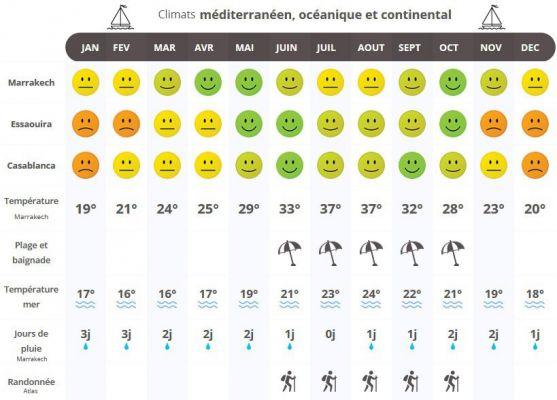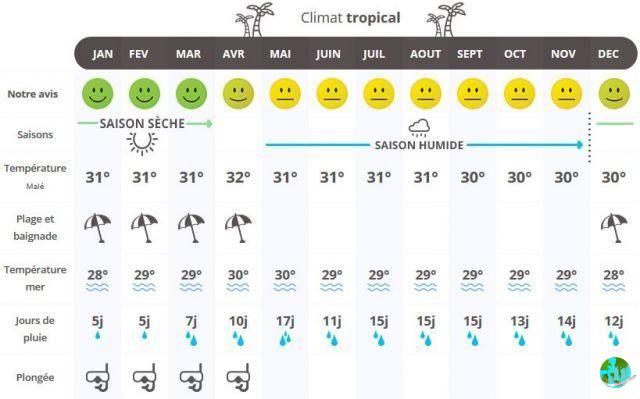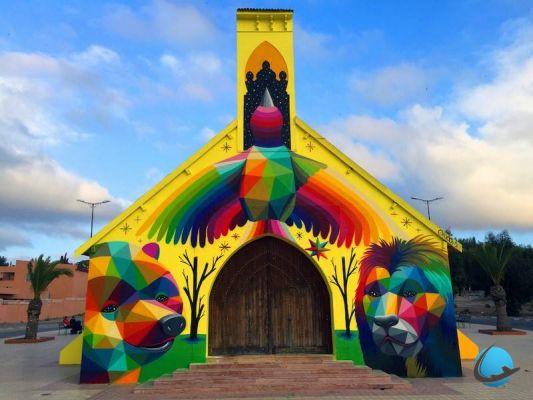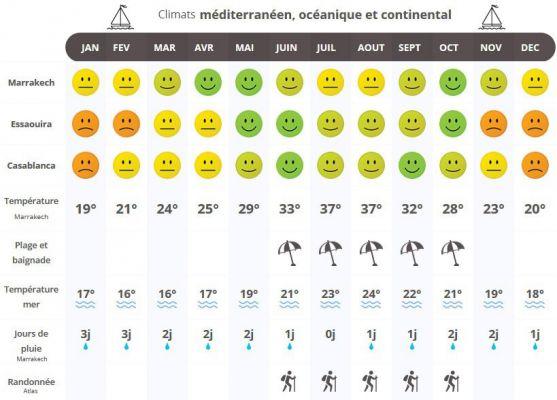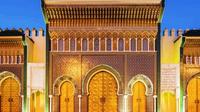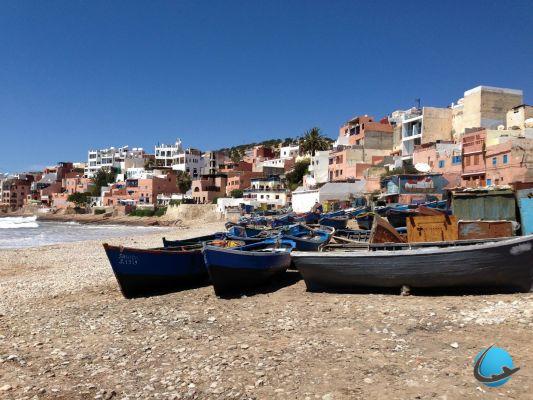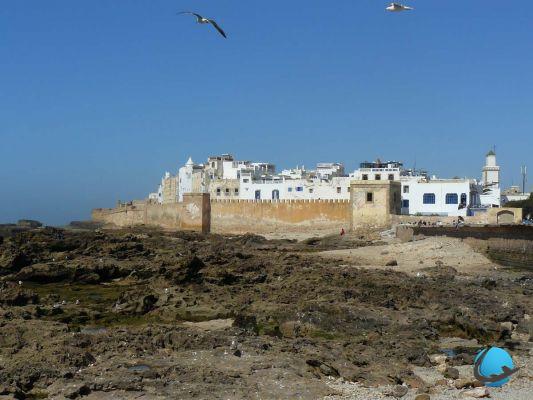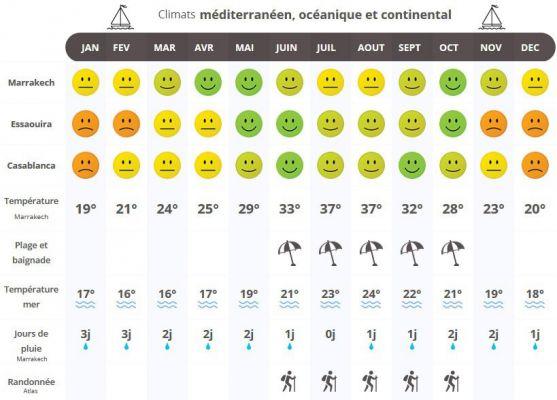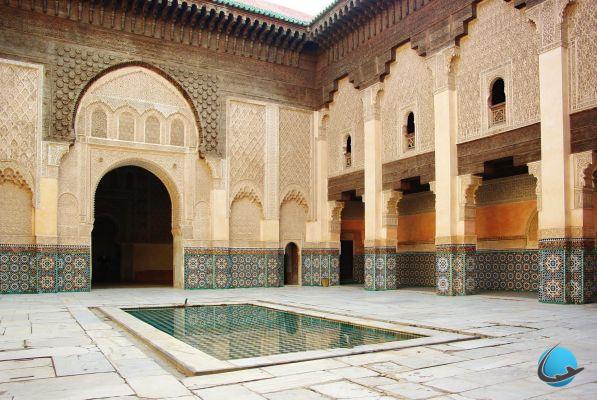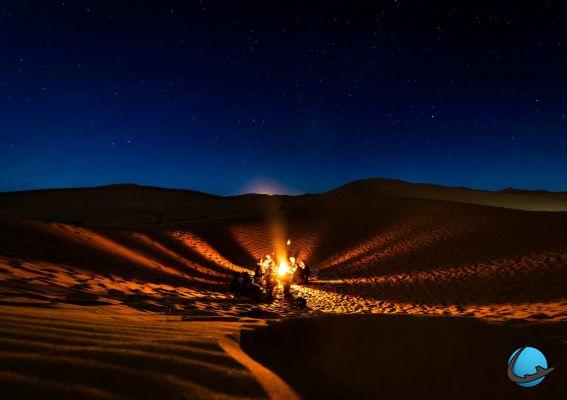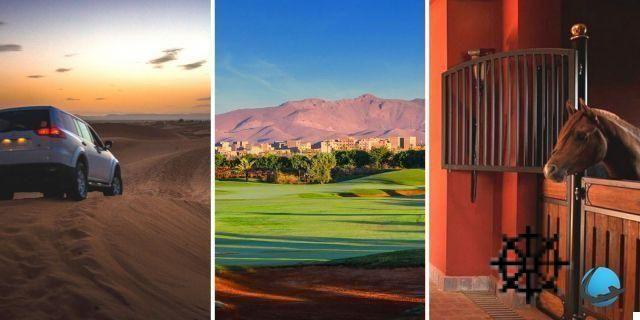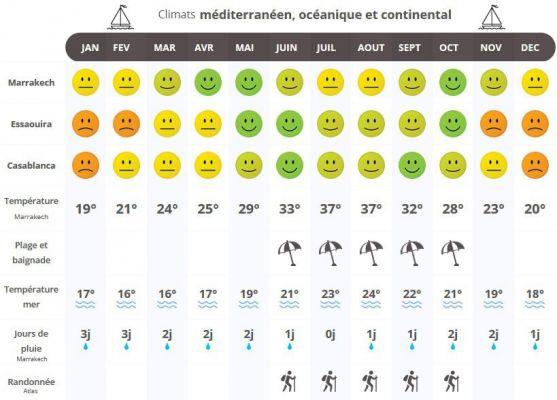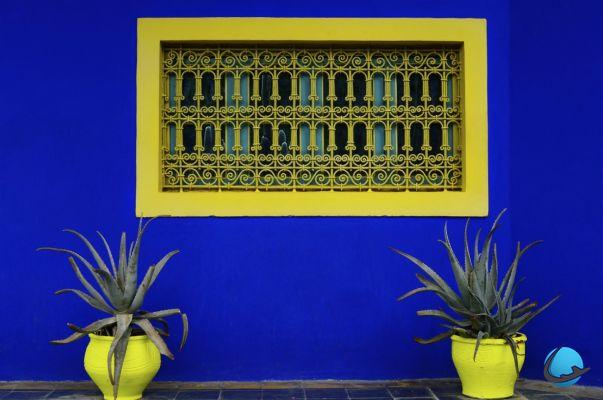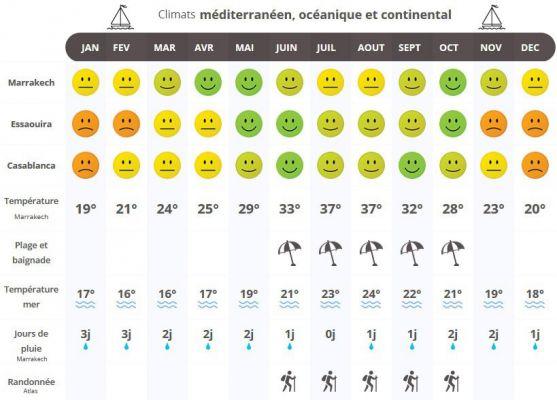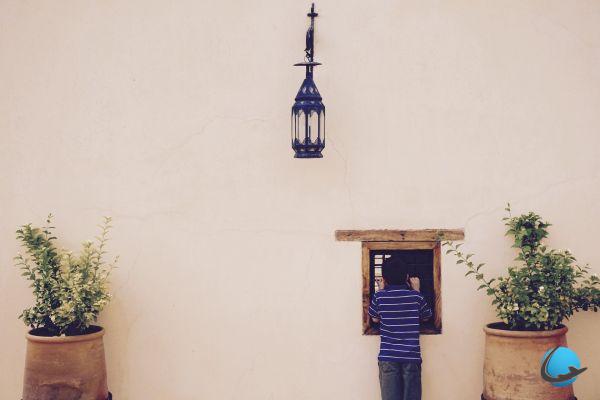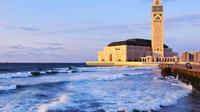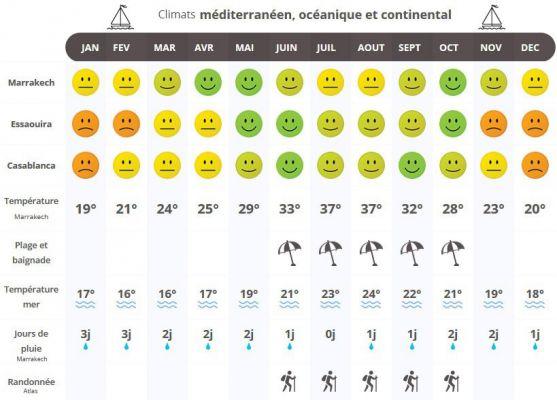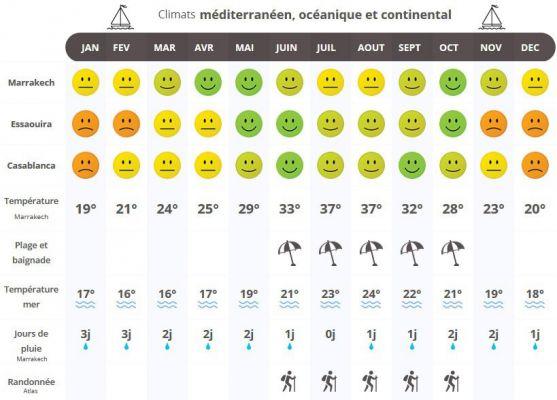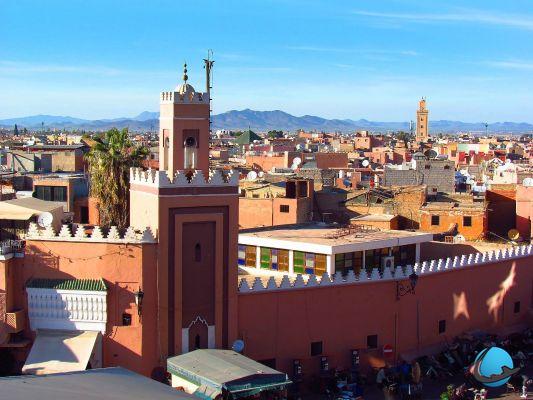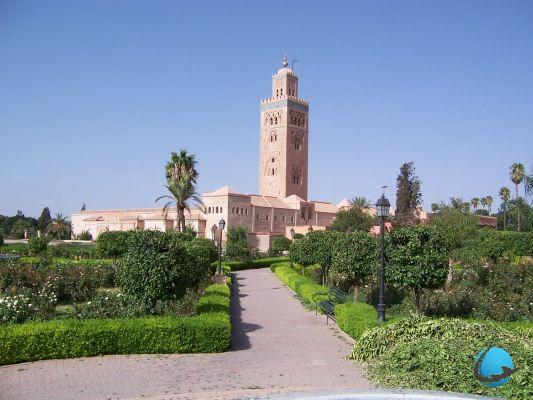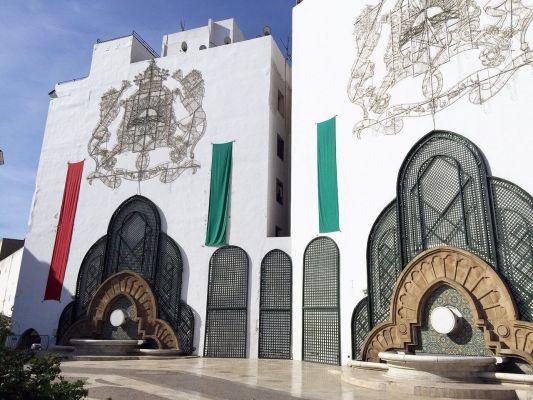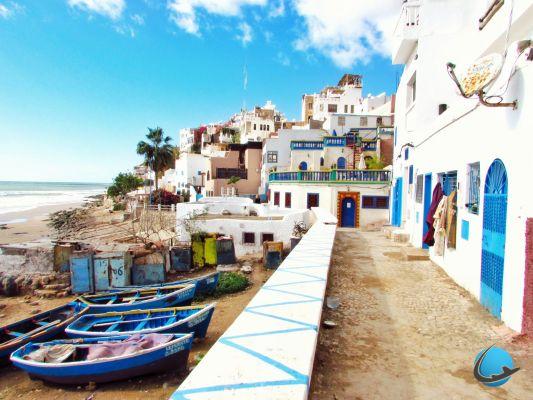
Bordered to the west by the Atlantic Ocean and to the north by the Mediterranean Sea, eastern Morocco, of the three Maghreb countries, the one that offers the largest area of coast. Indeed, it is not far from 3500 kilometers between the Atlantic and the Mediterranean and almost as many beaches where one can relax while enjoying a permanent sun. Corn Morocco is also a mountainous land where eternal snows resist a few hundred kilometers from a desert of arid sand. Visiting Morocco is therefore discovering this land of contrasts ...
Africa at the gates of Europe
Morocco has long been a land of power struggles between Europeans and Arabs. In the middle Ages, the different dynasties made it possible to found cities like Fez, Marrakech or Cordoba. You will see their power displayed in the Casbahs and in many monuments of Moroccan heritage, such as the Hassan Tower in Rabat. These demonstrations of past glory are a must-see.
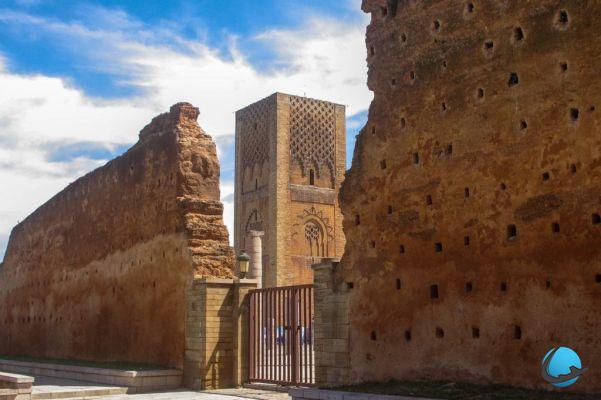 La Tour Hassan
La Tour Hassan
At the time of the great colonial powers, in the 19th century, Morocco is one of the most coveted African countries and a stakes area between English, Spanish and French. In the 20th century, Morocco came under French and Spanish protectorate. The country only acquired full and complete independence in 1956. Today it is a constitutional monarchy with a monarch, both spiritual and temporal leader of its subjects.
Land of contrasts
Morocco is a country of very astonishing contrasts: the Sahara desert borders the Atlantic Ocean, the calm of a riad contrasts with the activity of the medina ... A traveler can just as easily walk in the green hills of Fez as ski touring in the Atlas Mountains, not far from the palm grove of Marrakech! There are so many activities to do, places to go out that it would take a long stay to capture all the finesse of Moroccan culture.
A romantic imagination
Morocco… This name alone is enough to give birth to a whole romantic imagination. First of all, there are the intricately carved city gates, then the bustle of the souks and medinas. It is also the Sahara desert, the camels, the Berber people, the sand which undulates under the effect of the wind.. Finally, visiting Morocco is associated with well-being and thalassotherapy, an activity to do absolutely in one of the coastal cities such as Agadir, Casablanca or Rabat. Like Tunisia and Algeria, Morocco is also a country where hospitality is a legendary tradition. Mint tea, pastry, smiles displayed… Everything encourages conviviality and sharing!
Read also: 8 unusual experiences to discover the country differently
When is the best time to go to Morocco?
Morocco benefits from a Mediterranean climate, very favorable to tourism and this all year round. We can therefore go there in any season but be aware that the summer school holidays are very popular with visitors who tend to invade its beaches, causing prices to rise somewhat on the spot. In the Agadir region, prefer the month of September because the majority of tourists will be back to their daily routine. Same thing in Marrakech which, although beautiful all year round, can be less pleasant to live in when saturated with tourists. If you plan to camp in the area, avoid the winter months during which the nights can be very cool.
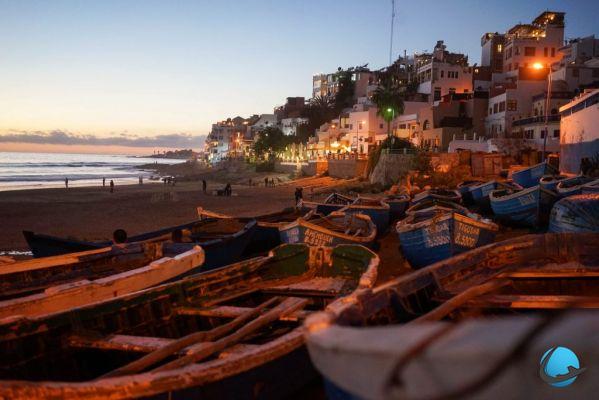 Taghazout beach
Taghazout beach
Generally, It is therefore recommended that those who can visit Morocco outside of school holidays. The lower attendance has a positive impact on prices and makes city walks more pleasant and picturesque. Keep in mind that Morocco is a hot country, with multiple seaside resorts. The guarantee of being able to dip at any time of the year!
What budget should you plan for during your stay?
Visiting Morocco can be done inexpensively but it is also possible to seriously heat up the blue card if you opt for high standard accommodation and exceptional activities. Youth hostels are not necessarily attractive, except perhaps in the big cities, because the classic hotels charge roughly equivalent prices. A double room in Meknes, for example, costs only around 5 euros a night, while the average price in Casablanca is around 50 euros. You can also use Airbnb. The prices are then very varied, from 30 euros per night for a private room up to 250 euros for a high standing riad.
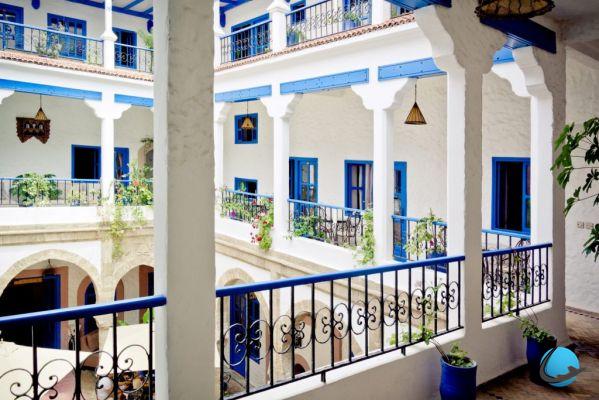 A Moroccan Riad
A Moroccan Riad
Moroccan cuisine is renowned for its diversity and quality, but also for its very low cost. Know thatan average meal in a restaurant costs between 20 and 50 dirhams, or between 2 and 5 euros. At this price, you can squat in restaurants and not worry about the dishes! There are many free activities in Morocco. Visiting the souk, lazing on the beach or strolling in the Atlas are some of the many joys accessible to all. However, it would be a shame to miss out on a trek in the desert led by a knowledgeable guide, especially since this will rarely cost you more than 50 euros for two people for two days with a night in the tent included. On the transport side, Morocco is very cheap, we will come back to this in a later part.
How to get to Morocco from France?
To visit Morocco, the simplest, fastest and often even the cheapest way is to fly. Today, most of the big cities in France charter flights to Morocco, in particular via Air France and Royal Air Maroc, but also via low-cost companies. Tangier, Fez, Casablanca or Marrakech, there is no shortage of international airports on Moroccan territory and reaching them generally only requires a minimal financial effort. Depending on the period, destination and point of departure, flights cost between 120 and 300 euros for a 2h30 to 4 hour journey. Be proactive when making your reservation because prices soar quickly, especially during summer periods.
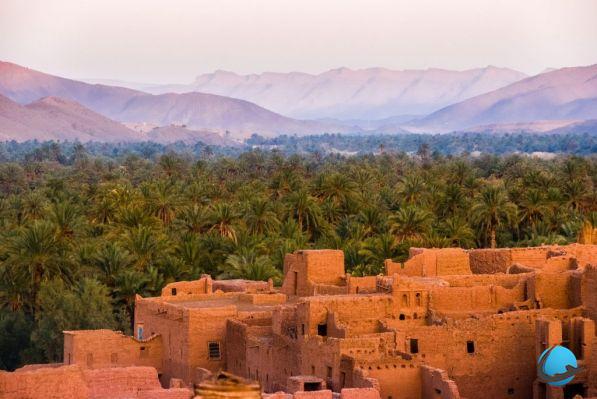 Tamnougalt in Morocco
Tamnougalt in Morocco
Bitumen addicts may also consider a trip by land to the southern tip of Spain before catching a ferry there. For information, from Paris to Tarifa, one of the main embarkation ports for Morocco with Algeciras, you will need around 18 hours by road. A straw for real backpackers ... If you do not have a vehicle, also know thatthere are bus lines between Paris (but also other major cities in France) and many Moroccan cities. Even if the prices are attractive (from 100 to 250 euros), the trip still lasts 40 hours.
What are the culinary specialties of the country?
The couscous is obviously the star of Moroccan cuisine. Of Berber origin, it is traditionally tasted on Fridays, but is now enjoyed every day of the week. Visiting Morocco without tasting a couscous would be an unforgivable fault of taste. The tagine is also of Berber origin. Its composition comes in many forms, because it is cooking in an earthenware dish covered with a cone that gives the dish its name, rather than the nature of the ingredients. Third muse of Moroccan cuisine, The pill. This brick and puff pastry cake, often stuffed with minced pigeon but also sometimes with seafood or chicken is usually served at receptions. It can be sweet or savory.
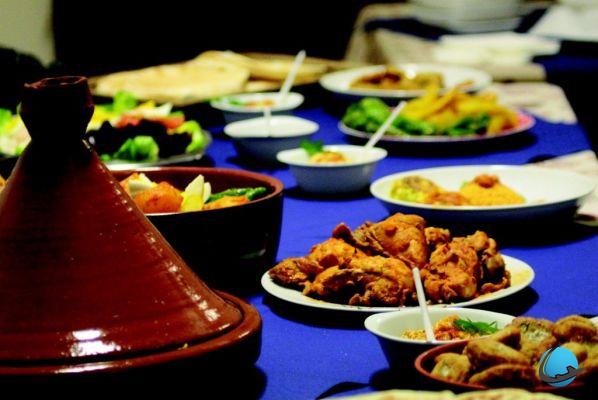 Tagine in Morocco
Tagine in Morocco
We could also cite the barbecue, whose Moroccan variant has the specificity of cooking the mutton or lamb in a choke and not in a spit, or the thread, this soup traditionally appreciated to break the Ramadan fast, but this paragraph would be incomplete if we did not address the subject of pastries and their wonderful flavors. Orange blossom and crushed almonds for the gazelle horn, honey, anise, almond, sesame and wheat flour for the la chebakia ou la ghribia that are offered to guests at weddings and engagement parties. Not to mention the famous mint tea that can be enjoyed at any time and on all occasions!
How to get around there?
On the transport side, Morocco benefits froman excellent bus network which serves all major cities and points of tourist interest. For example, a trip from Rabat to Marrakech costs between 135 and 190 dirhams. Taxis are also very cheap with support billed for 2 or 3 dirhams, then between 4 and 8 dirhams per kilometer. Car rental companies are present on Moroccan territory but we advise against them, especially because of difficult driving in large cities.
The more adventurous can also try their hand at hitchhiking, widely practiced in the country. Be vigilant all the same and respect the usual safety conditions. In particular, avoid traveling alone and always let someone you trust know where you are going or where you are. Visiting Morocco by hitchhiking is an incomparable experience that will allow you to meet authentic Moroccans, on condition that you respect local customs and culture.
Which place in Morocco to favor for your stay?
There are many well-known cities in Morocco: Casablanca, Agadir, Ouarzazate… But only four are called Makhzen cities, that is to say imperial cities: Fez, Marrakech, Meknes and Rabat. Here is an overview of these privileged cities to visit in Morocco!
Marrakech, the pearl of the south
The third city of the Moroccan kingdom is also the one that gave its name to Morocco. Marrakech is a city founded in the 11th century, located at the foot of the Atlas. Many peoples go to Marrakech, but come from the desert or the immense mountain range that constitutes the Atlas. It is the Berbers who give this eternal air to Marrakech.
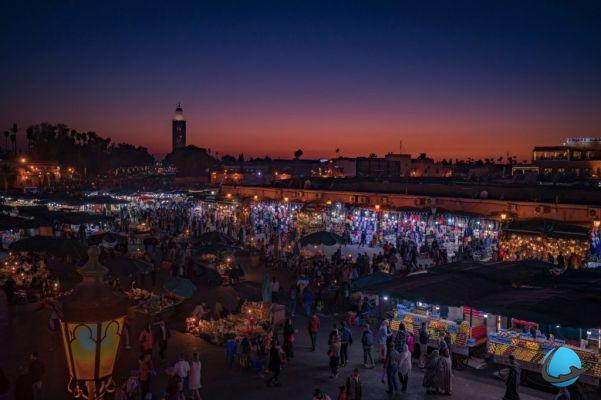 Marrakech
Marrakech
In Marrakech, it is imperative visit the Medina. It is in fact classified as a UNESCO World Heritage Site. In its northern part, it includes seven tombs, which often makes Marrakech say that it is the city of seven saints. Other places to explore like the Majorelle garden, or, inescapable, the Djemaa El Fna square and the Koutouba mosque. Also make a detour to the Dar Si Saïd museum in which hundreds of handicrafts from different periods are exhibited.
Don't Miss: The Complete Guide to Marrakech
Fez, the refined
Fourth largest city in Morocco, Fez is a modern city that has preserved its history. A characteristic : we enter Fez through the large medieval gate. The oriental-style old town is a UNESCO World Heritage Site. There is also the largest medina in the world. Another characteristic of this city, the blue is omnipresent: one speaks thus of blue of Fez.
There are a lot of things to do in prestigious Fez. First of all, a visit to the Batha museum is a must. It is a summer residence of the royal family, built in the 19th century, which today houses a museum of popular arts and traditions. Above all, visit the medina and take the opportunity to go shopping in the souk. Tanners, carpenters and other craftsmen will offer you many items.
Rabat, the capital
Rabat is a pleasant and flowery little town. It is an atypical city: although capital of Morocco, it has no industrial activity and is only the second largest city in the country. Crossed by avenue Mohammed V, it offers all its visitors a pleasant and laughing face, reinforced by the proximity of the Atlantic Ocean. In Rabat, a must see the Kasbah des Oudayas and its ocher-colored door. Then go to the Hassan Tower, emblematic of this city and its ambitions. Take the opportunity to visit the absolutely sumptuous mosque.
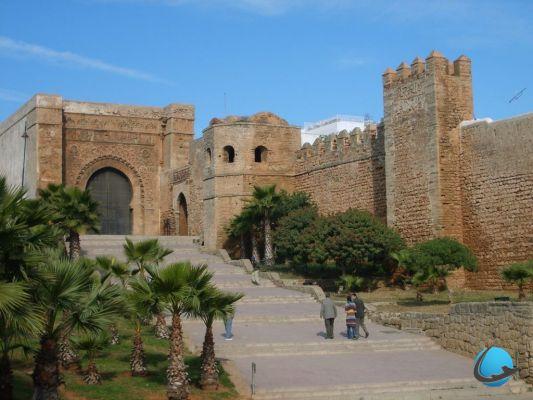 Kasbah Oudayas
Kasbah Oudayas
Meknes, the Ismailian
Fifth city in Morocco, Meknes is a bright city, where wide open spaces reign supreme: wide perspectives, immense buildings… Everything lends itself to being contemplated, to be explored and visited. Moreover, Meknes is often called the Moroccan Versailles. Take a seat in a horse-drawn carriage and explore the city, letting yourself be carried along along the ramparts. You will then see all the important places, most of which date from Ismail, the founder of this city. This sector is also classified by Unesco.
The essential visits to do in Morocco
This Maghreb country is one of the most culturally rich destinations on the Mediterranean rim. The various Moroccan cities, and in particular the imperial cities, bear witness to a rich and prestigious past. Here are some places to visit in Morocco:
Medinas
Many cities offer two faces to visitors: a modern city with concrete buildings and buildings, usually on the outskirts. The other side is by far the most popular of all: the medinas. These are the oldest districts of the city, in which we find artisans, souks, markets and other places of commerce.. The medinas are distinguished by small winding streets and most of the wealth of Moroccan heritage is represented there. Five medinas are classified as World Heritage by Unesco, which testifies to their importance on the cultural and historical level: Fès, Marrakech, Tétouan, Essaouira and Meknes. All these cities are to be discovered for their monuments and their heritage.
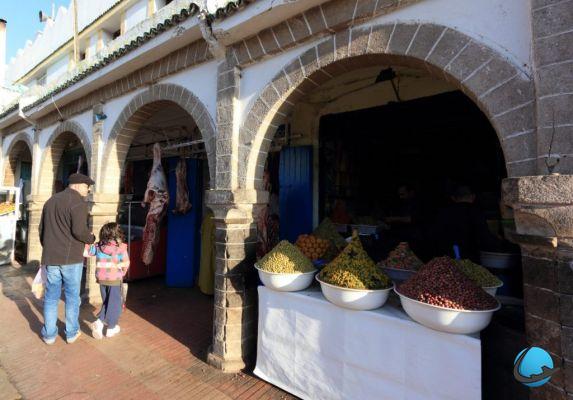 The Medina
The Medina
Mosques
Visiting Morocco is also discovering its main religion, which is Islam. The culture of this country comes mainly from this cult. Where possible, do not hesitate to visit the most important mosques in the country: you will then witness an assault of incomparable architectural and ornamental refinements. Some are very well known, such as the Hassan II mosque in Rabat. However, before entering a mosque, be sure to respect traditional rites.
Bab Mansour
Completed in 1732, Bab Mansour is one of the 70 gates of Meknes. It is undoubtedly the most beautiful, standing majestically in front of the visitor. Bab Mansour houses an art gallery within it.
Le Palais royal al Mankcha
This 19th century palace, located in Meknes, has become a military academy. Ihowever kept its historical character. From its walls emerges all the imperial power to which no one remains indifferent.
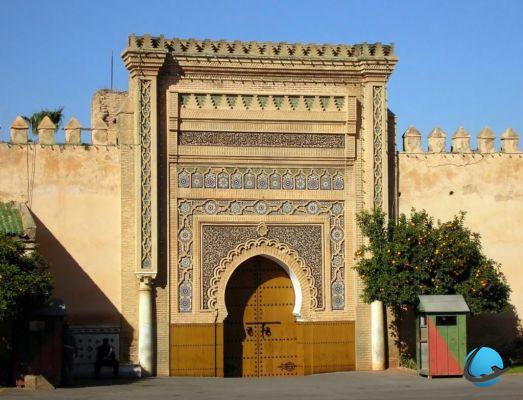 The Royal Palace of Meknes
The Royal Palace of Meknes
The Kasbah of the Oudaïas
In Rabat, the Kasbah des Oudaïas is dominated by a huge Almohad door which served for a time as a prison and as a military center. Step by step, it was cleared, restored and then enhanced, until today offering its splendors to tourists.
La Tour Hassan
Rabat's most famous monument, the Hassan Tower is unfinished. Dating from the 12th century, it rises to 44 meters high, which is quite impressive for the time. In a traditional Moroccan style, it is admired by all.
The Batha Museum
In Fez, the Batha Palace, built at the end of the 19th century, shows beautiful Hispano-Moorish architecture. Since 1915, this palace has become a museum that highlights the finesse of the traditional art of Fez : you can admire the woodcarvings, blue ceramics, typical of Fez, as well as carpets, jewelry and other astrolabes.
La mosquée El Karaouiyine
The El Karaouiyine mosque in Fez houses the oldest university in the world. Located on Place Sarrafine, it was founded by a woman in 862 and it is now possible to access it through 14 doors.
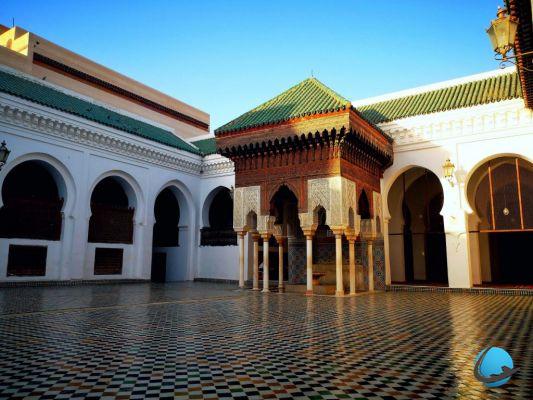 El Karaouiyine University
El Karaouiyine University
The Museum of Contemporary Art
Created in 1990 in Tangier, the contemporary art museum reminds us that Moroccan art is very varied. The country did not focus only on Islamic art, on the contrary! He also knows how to open up to the most contemporary forms of art.
The Ethnographic Museum
The Ethnographic Museum of Tetouan testifies to the cultural importance of the city with indigenous, Ottoman, European and Andalusian cultures. You will thus discover the practices and customs that each of these great civilizations left to this region Moroccan, both in the private and public spheres.
The souk
Each city has its souk (market). They are often impressive and it is very difficult to find your way around. However, they are truly part of the places to visit because they form the heart of each city. In Morocco, beauty products are often very attractive and made from natural products. You will often find argan oil, black soap, but also creams and perfumes made from jasmine, amber, musk or orange blossom. There is a souvenir to bring back absolutely from Morocco: the famous carpet! You will find different labels necessary to pass customs and imposed by the state: blue corresponds to a carpet of excellent quality, while yellow is synonymous with poor quality. Remember to check their existence before buying.
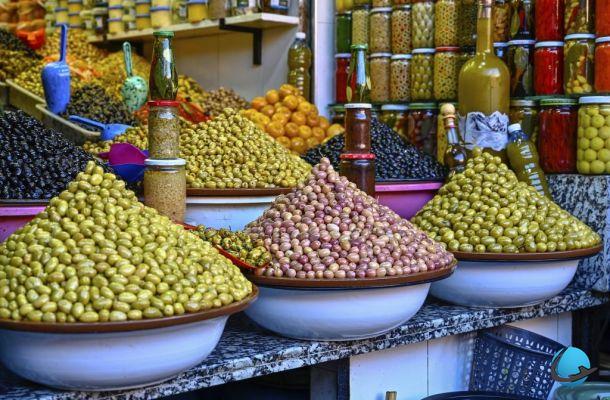 The souk
The souk
During your stay, you will have had time to appreciate the different Moroccan dishes. Why not extend this taste experience by buying a tagine dish? But more than knowing which souvenir to buy ... you have to know how to negotiate! In Morocco, everything has a price, but those displayed are all questionable. You can leave with items at a lower cost. Never forget that negotiation is a national sport in this country. So get into their game: it quickly turns out to be interesting.
Useful information
Visiting Morocco is prepared beforehand. Here is all the practical information that should help you plan your stay:
- Formalities: For a stay of less than 3 months, a valid passport is sufficient to visit Morocco. Please note, since 2015, the passport is compulsory for everyone!
- Cash : The currency of Morocco is the Dirham (MAD). You will find vending machines in all major Moroccan cities. Hotels and department stores generally accept card payments.
- Health : No vaccine is required to enter the country. Just avoid drinking tap water and plan to take effective mosquito repellent. Be careful also to protect yourself from the sun in summer or in the desert!
- The Moroccan National Tourist Office: Find all the information on the activities to do in Morocco on the official website. You can also consult the addresses of the tourist offices of the main Moroccan cities.
- Sites to discover: ideas for tours in Morocco on Carnets-voyage.com
Stroll through the Moroccan souks!
Do you plan to visit Morocco soon? Let's talk about it in the comments!




